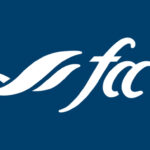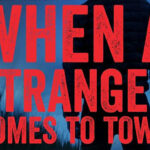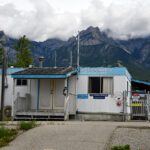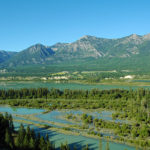Home »

East Kootenay Urban Mule Deer Translocation update
The East Kootenay Urban Mule Deer Translocation Trial began one year ago this week.
Capture and translocation of 60 deer from East Kootenay communities of Kimberley, Elkford, Cranbrook and Invermere occurred in February and March, 2016. While monitoring of deer fitted with GPS radio collars continues, a small number of deer will be captured and trans-located in the coming weeks.
Results to date have been highly variable among individuals. Some deer have moved great distances, while others not much at all. Some deer have stayed in natural habitats and not encountered human developments, while others have found communities and campgrounds and settled into their new “home towns.”
These deer in particular have been a challenge for the translocation trial. Ian Adams, a Cranbrook-based wildlife biologist who is coordinating the project noted, “From the outset, the province has been clear that it is not looking to translocate ‘the problem’ of habituated urban deer to other communities.”
How to deal with those deer that have moved into new communities has been problematic.
 “Three aggressive deer that were putting public safety at risk have been put down in developed areas, including Montana,” said Adams. “We’re closely monitoring a couple of others that have generated complaints.”
“Three aggressive deer that were putting public safety at risk have been put down in developed areas, including Montana,” said Adams. “We’re closely monitoring a couple of others that have generated complaints.”
However, other collared deer have encountered communities, such as Eureka, MT, but moved on without causing problems. Other deer have exhibited natural mule deer behaviour of migrating to higher elevations in the summer before returning to lower elevation winter range last fall.
One of the big questions for the translocation trial has been how the deer would survive.
“We’re around 50% survival of the collared deer that were released in February and March, 2016,” Adams said. Over the same time period, survival of collared non-urban mule deer in the same areas has been about 80%.
Concerns that urban deer would be predator-naïve seem to be unfounded. Predation rates are quite similar to non-urban mule deer. “We had some initial predation, mostly by cougar, in spring 2016 which was consistent with non-urban mule deer populations. Spring is when they are most vulnerable,” Adams said.
No predation occurred after early June until a deer was killed by a carnivore near Lake Koocanusa in mid-February.
Three deer died in the late autumn of unknown causes, possibly related to poor nutrition. “All three were very thin,” noted Adams. “At least one was very old.”
Determining cause of death is key, particularly for the animals that are found in poor body condition. Full testing of recovered deer mortalities has yet to be conducted. It’s very important that translocation maximizes humane animal care and that deer are able to find natural feed sources and use them effectively, he said.
The project will be trans-locating 15 to 20 more deer in the coming weeks. The objective is to redeploy GPS collars that have been retrieved from mortalities in order to collect more data on survivorship and movement, especially during the spring period when mule deer are most at risk. Deer will only be moved from Cranbrook and Kimberley in 2017 for logistical reasons. Elkford and Invermere, from where deer were also trans-located in 2016, remain key partners in the project.
 “We also want to look at other release site options,” said Adams. “The Koocanusa area has some great winter range, but unfortunately also has too many opportunities for the trans-located deer to access human developments and revert to their urban habits.”
“We also want to look at other release site options,” said Adams. “The Koocanusa area has some great winter range, but unfortunately also has too many opportunities for the trans-located deer to access human developments and revert to their urban habits.”
Also, 10 of the 22 radio-collared mule deer that were released at sites south of Highway 3 have been in Montana at one point or another, reaching as far south as Libby. Montana state wildlife officials have been very cooperative and interested in the study, but British Columbia does not want to export trans-located urban deer south of the border.
One of the key questions if translocation is to be considered as a future management option is finding suitable release sites.
“That is a big question,” Adams said. “Winter range is largely at low elevation in the Trench. That’s also where we reside and build our homes and communities.”
Finding suitable sites to release larger numbers of deer while minimizing the chances of habituated deer encountering other human developments will be very challenging.
The East Kootenay Urban Mule Deer Translocation Trial is a collaborative project among many partners: BC Ministry of Forests, Lands & Natural Resource Operations; City of Kimberley; District of Elkford; City of Cranbrook; Animal Alliance of Canada; Upper Kootenay Ecosystem Enhancement Program (Fish & Wildlife Compensation Program – Columbia Basin; Columbia Basin Trust); Columbia Basin Trust Community Initiatives Program; local Rod & Gun Clubs (Lake Windermere & District, Elkford, Kimberley, Canal Flats) and BC Backcountry Hunters & Anglers.
Submitted







